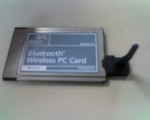The old version of the X.org ati x-server would do a true "clone" of my Thinkpad X31's LCD display out the VGA port on the back of the laptop. The new version shipped with Ubuntu 7.10 (gutsy) however doesn't do a true clone, so video overlays (called Xv in linux) will display movies on the LCD but not on the external VGA monitor.
So when you give a presentation with a movie, you can see the movie, but your audience can not! My X31 is able to play most movies without Xv so I decided not to use it. In windows, you can fix this problem by turning off Video Overlay in the display driver control panel. However, under Linux, you have to tell each of your movie players to use something besides Xv. Standard X11 works, but won't allow you to scale videos. I prefer to use OpenGL, which works very nicely with the open source ati driver.
To make mplayer use OpenGL, edit the ~/.mplayer/config file and add the line "vo=gl2".
To make totem use OpenGL, edit the ~/.gnome2/Totem/xine_config file to include a line as follows: "video.driver:OpenGL"
BTW- If you are unable to get video showing on your external VGA output, you can run the following command to set up a "clone" or "mirror" display:
xrandr –output LVDS –mode 1024×768 –output VGA-0 –mode 1024×768 –same-as LVDS


